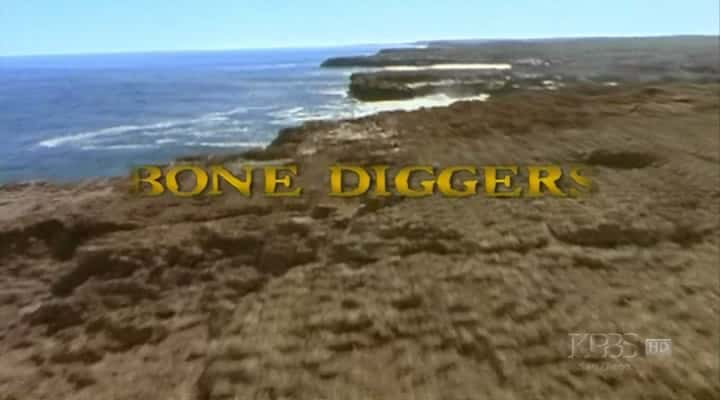|
|

外语原版纪录片《 Bone Diggers 》 - 纪录片1080P/720P/360P高清标清网盘迅雷下载
Bone Diggers
纪录片关键词:
Bone Diggers,Art and Soul,Attack of the Killer Kangaroos,Bastardy,Ben Franklins Bones,Canada (DC),Death of the Megabeasts,First Australians,Killer Birds,Prehistoric: Predators of the Past,Prehistoric Park
Science,PBS,PBS Nova,2007,English,Prehistoric Animals
纪录片内容简介:
General Information:
Science Documentary published by PBS broadcasted as part of PBS Nova series in 2007 - English narration
Information
NOVA takes viewers to the stark Australian outback in search of the elusive bones of one of the world's most bizarre prehistoric creatures—a giant predatory marsupial called Thylacoleo. Australia's leading paleontologists endure extreme weather, treacherous drops into a deep cavern, and the threat of fossil poachers as they launch a daring expedition to find the rare megabeast.
During the Ice Age a million or more years ago, Australia was home to a zoo of extraordinary giant animals, including eight-foot-tall kangaroos, wombats the size of hippos, snakes three feet in diameter, and a horned tortoise as big as a Volkswagen. But none was quite as bizarre or fearsome as Thylacoleo, the meat-eating marsupial lion. Pound for pound, this creature had the most powerful bite of any mammal, living or extinct—in fact, its bite was equal to that of a much bigger African lion today. But even though it was the king of ancient Australian predators, Thylacoleo was eventually toppled from its throne, dying out along with all the rest of the outsized beasts. What happened to drive so many extraordinary megabeasts into oblivion?
In "Bone Diggers," NOVA joins the Australian expedition to retrieve a rare intact skeleton of the meat-eating marsupial. The analysis of its bones throws new light on Thylacoleo's many peculiarities, notably the question of how it attacked its prey . And, finally, the show digs into the mystery of what finally overwhelmed the giant Ice Age creatures and whether early human hunters were responsible.
The adventure begins when paleontologist John Long receives an e-mail from an amateur explorer with a tantalizing photo attached. The photo shows an apparently intact skeleton of Thylacoleo in the depths of a remote cave in the outback. Since no one has found a complete skeleton before, the discovery would be a paleontological milestone. So Long and his colleagues at the Western Australian Museum set out on an arduous expedition, crossing the desolate Nullarbor Plain to pinpoint the remote cave shown in the e-mail. Over the next three weeks, exploring the dangerous recesses of the ancient cavern, the team finds a remarkable trove of fossil remains—including several astonishingly well-preserved Thylacoleo skeletons together with previously unknown species of giant kangaroo.
Back in Perth, the team begins studying the bones and building up a picture of the marsupial lion's unique anatomy and behavior. Although most marsupials such as kangaroos and koalas are herbivores, Thylacoleo was something completely different—a fearsome predator with pincer-like front teeth and a slashing front claw on its thumb. Yet it wasn't built like a lion; with its low-slung body and short legs, it could never have chased its prey at high speed. Instead, it probably waited in ambush for its next meal, perhaps dropping from trees.
In the final scenes of "Bone Diggers," NOVA investigates the mystery of Thylacoleo's disappearance and that of all the other Australian giants. A fierce controversy turns on when exactly this continent-wide extinction occurred. The debate is split between advocates for a late date at the cold climax of the Ice Age some 30,000 years ago, when climate stresses would have been particularly severe. The competing camp claims the extinction was much earlier, around 50,000 years ago, when the climate was milder and the first humans arrived in Australia. While it's unlikely that humans could have directly over-hunted all the huge animals, Aboriginal hunters may well have set fires that gradually changed the profile of vegetation in the outback, making it harder for Thylacoleo's prey to get by. Although it was the king of beasts, Thylacoleo was probably vulnerable to shifts in the food chain.
Whichever theory is correct, the riddle has implications that stretch beyond Australia. Creatures like woolly mammoths, mastodons, cave bears, giant sloths, and many other species all died out on other continents as the Ice Age ended and human populations expanded. The jury is out on just how big a role human predation played both in Australia and on the worldwide stage.
From the gripping discovery in the desert cavern to the detective work in the lab, "Bone Diggers" takes NOVA viewers on a paleontological "CSI," unraveling a prehistoric puzzle that has eluded paleontologists for a century.
Technical Specs
Video Codec: XviD
Video Bitrate: 1453 kbps
Video Resolution: 720x400
Audio Codec: MP3
Audio BitRate: 135 KB/s
RunTime: 00:52:17
Number Of Parts: 1
Part Size: 599 MB
Ripped by SoS
~~~~~~~~~~~~~~~~~~~~~~~~~~~~~~~~~~~~~~~~~~
外语原版纪录片《 Bone Diggers 》 - 纪录片1080P/720P/360P高清标清网盘迅雷下载
下载地址:
(本链接可能为BT下载方式,需自备BT类下载工具。推荐使用115网盘离线下载,或使用其他具有离线下载功能的网盘)
游客 文件下载链接就在这里,在您回复评论成功后才能显示。
请勿回复无意义的灌水内容。下拉页面到最底部回复或者 【点击此处快捷回复】,回复后返回此处即可查看下载链接。 如您没注册本站会员,可以点击 注册本站,注册后即可回复下载。 |
小贴士:【影视自媒体解说文案请移步:夏至文案解说网 www.xiazhi.vip】上一篇:外语原版纪录片《 Bomb on Board 》 - 纪录片1080P/720P/360P高清标清网盘迅雷下载下一篇:外语原版纪录片《 Boredom: The Movie 》 - 纪录片1080P/720P/360P高清标清网盘迅雷下载
|